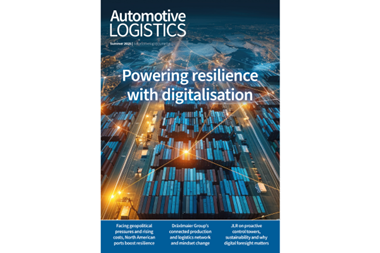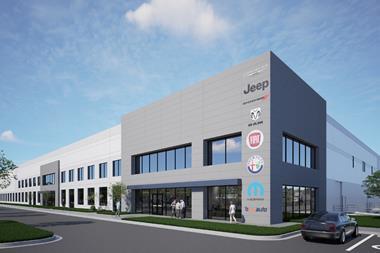
The automotive industry has one of the more multifaceted supply chains within manufacturing, involving hundreds of suppliers spread across multiple countries and continents. As such, a service-driven, robust and efficient transport management process is required.
Outsourcing transport via third party logistics providers (3PLs) has long been common practice in achieving this. In contrast, the use of ‘true’ 4PLs – which offer an additional level of intelligence – has yet to be fully embraced by the industry, despite the many benefits they offer the automotive supply chain. However, 4PL service providers are starting to make in-roads into some large OEMs and their suppliers in this important market.
Defining 3PLs and 4PLsThere is still a lack of clarity and understanding around the definition of a 4PL and how it differs from a 3PL. Also, some organisations that claim to be 4PLs are unable to operate with the independence that characterises a true 4PL. Many freight forwarders refer to themselves as 4PLs and some carriers or 3PLs have a 4PL division, but there is a conflict of interest between using their own assets and finding the best solution for a client’s needs.
Typically, 3PLs utilise their own warehousing and transport assets, and work to maximise these to increase revenue, minimise any empty running, and ensure maximum profitability of the vehicles – also known as ‘sweating the assets’. Ultimately, 3PLs need to prioritise their own efficiencies just to make ends meet.
Another reason for the hesitation in using 4PLs is that in a declining or poorly performing market, companies are less likely to upset processes and fundamentally change their operating methodology. However, with car sales at their highest since the 1990s, many manufacturers are looking to improve processes to compete in an increasingly competitive marketplace.
Adding a level of intelligenceA 4PL provides all the transport functions of a 3PL, but takes the service a step further by providing a system to manage the complete transport fulfilment process.
A 4PL’s assets are its systems and people. It doesn’t own any physical warehousing or transport assets and so is immune to the 3PL vehicle asset dilemma, making it completely independent. A 4PL can therefore focus on ensuring that the optimum solution for the changing needs of the customer is in place at all times. It can spend energy implementing process and system improvements, rather than dealing with driver and vehicle issues.
4PLs in the automotive supply chainThe 4PL solution lends itself particularly well to two specific areas of the automotive industry: the inbound supply to the assembly line (flexibility and variety), and aftermarket parts distribution (system automation).
With sophisticated technology offering real-time information and increased transparency, a 4PL can add significant value to an organisation, particularly by improving outdated systems. Technology enhances visibility from collection through to delivery with the capturing and processing of advance shipping notices. It also enables manufacturers to manage their inventory more dynamically, which reduces costs.
Since the 2008 downturn in volumes, the investment required to change obsolete systems and approaches has simply not existed. However, as the need for increased manufacturer competitiveness combines with a return to higher volumes of demand, OEMs are now looking at more sophisticated ways of managing their supply chains more efficiently.
The optimum solutionWhile 4PLs have a lot to offer, the optimum solution for most automotive suppliers and/or manufacturers is likely to involve the use of multiple 3PLs. This minimises empty running (and therefore waste), and ensures the right transport service is applied on a consignment by consignment basis – parcel, groupage, full truck load (FTL), ocean or air – all managed through a 4PL platform. Specialism is key, and most 3PLs will be experts in a particular area with a detailed knowledge of the requirements of physical infrastructure, as well as different systems.
Meanwhile, a 4PL provides a level of unbiased transport expertise not usually available to a shipper. This can cover everything from carrier tendering, to carrier performance management, financial control and reporting, and transport execution. Using a 4PL also facilitates continuous improvement through the implementation of tried and tested initiative frameworks that help improve cost and service on a tactical and strategic level. Ultimately, implementing best practice from multiple sectors ensures the right cost and service balance is achieved.
The role of automationA true 4PL operates an integrated transport management system (TMS), which automates a large proportion of activities, allowing smooth management of a whole range of complex processes. The agreement is based on a partnership with a management fee and savings gain share agreement. The rates the 4PL is paying are visible to the shipper to ensure there is complete transparency.
The 4PL system ensures transport information flow is controlled and automated as much as possible. A sophisticated TMS will also optimise transport requirements, reducing transport planning time and producing a more cost effective solution. A 4PL also provides information to help drive savings and service improvements throughout the operation, supplying information to highlight areas of inefficiency within a shipper’s operation.
It is likely that 4PLs will become increasingly digital, using artificial intelligence systems to ‘learn’ from data and decisions. Processes will become fully automated, including the optimisation and planning of transport and the control of all special activities. This will enable automotive companies opting for a 4PL solution to use data more effectively, and drive continuous improvement programmes that can help to ensure ongoing efficiency and profitability.
Tim Fawkes is the managing director at 3T logistics. 3T has offices in UK, France and Spain and customers include JCB, Honda and LINPAC Packaging.

































